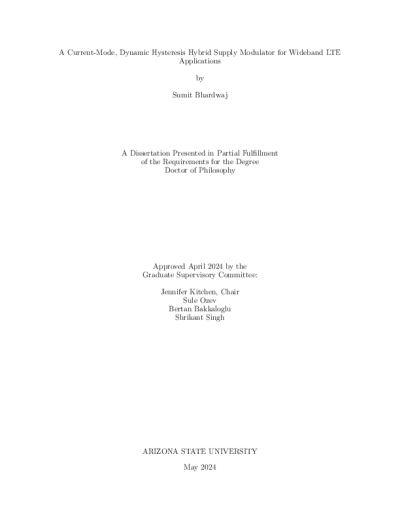Built-in Self-Test for Monitoring Analog Circuits

- Author (aut): Raghavendra, Chinmaye
- Thesis advisor (ths): Ozev, Sule
- Committee member: Bakkaloglu, Bertan
- Committee member: Kitchen, Jennifer
- Publisher (pbl): Arizona State University








Three models have been created to visualize and characterize the voltage response of a standing wave accelerating cavity system. These models are generalized to fit any cavity with known values of the quality factor, coupling factor, and resonant frequency but were applied to the Arizona State Universities Compact X-ray Free Electron Laser. To model these systems efficiently, baseband I and Q measurements were used to eliminate the modeling of high frequencies. The three models discussed in this paper include a single standing wave cavity, two cavities coupled through a 3dB quadrature hybrid, and a pulse compression system. The second model on two coupled cavities will demonstrate how detuning will impact two cavities with the same RF source split through a hybrid. The pulse compression model will be used to demonstrate the impact of feeding pulse compression into a standing wave cavity. The pulse compressor will demonstrate more than a 50\% increase of the voltage inside the cavity.
